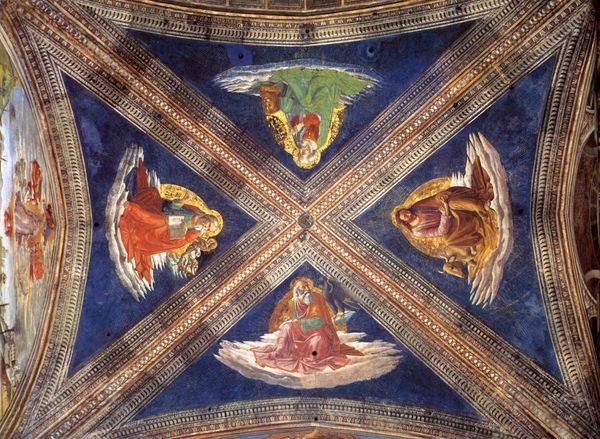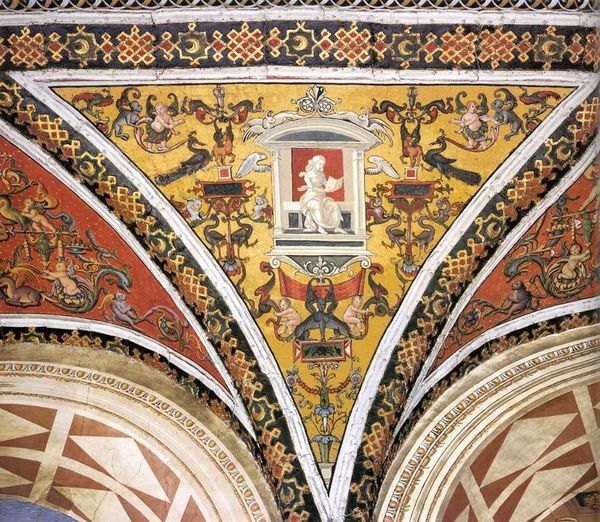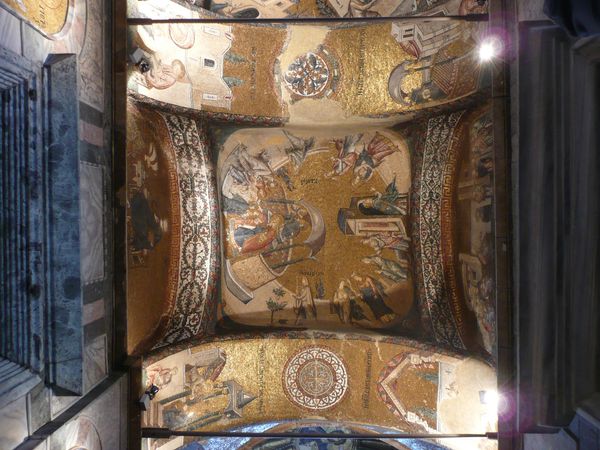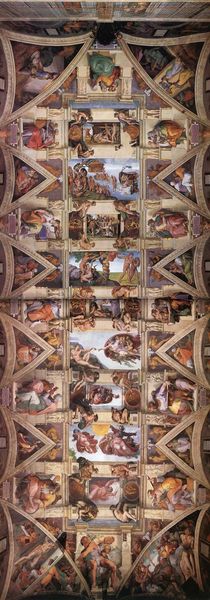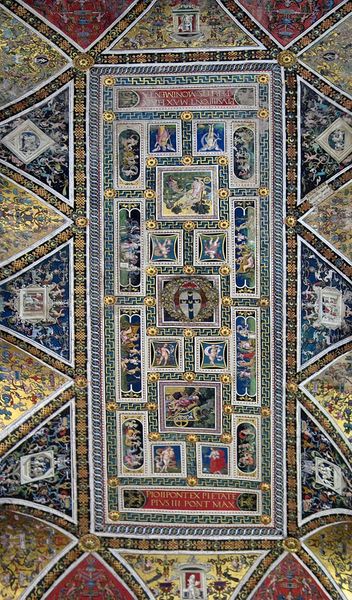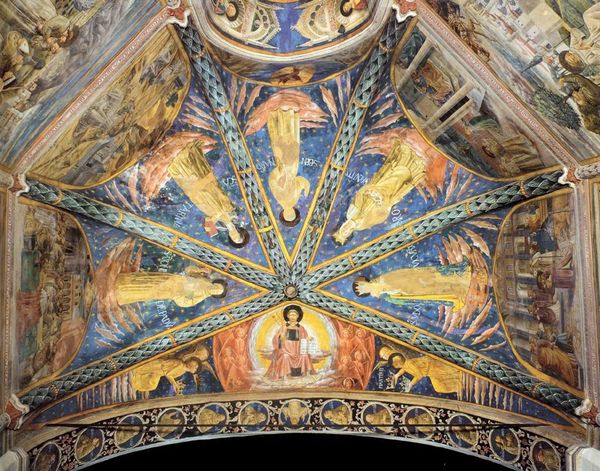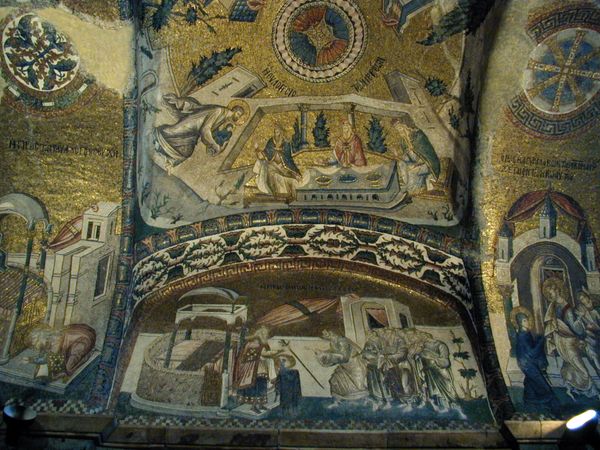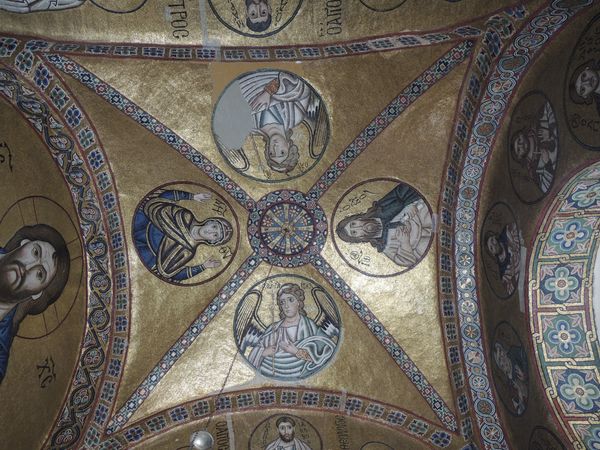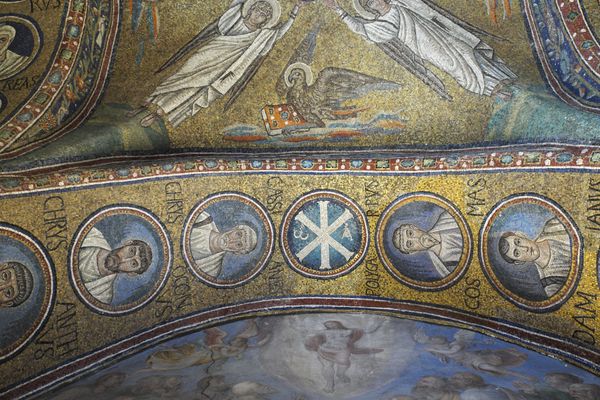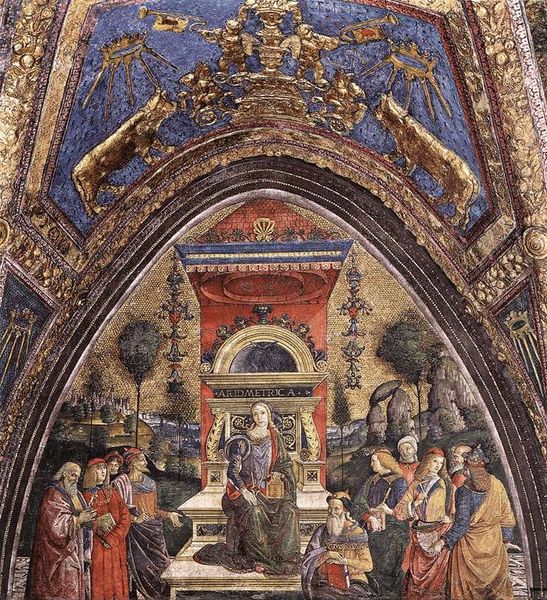
carving, tempera, painting, fresco, architecture
#
portrait
#
carving
#
tempera
#
painting
#
sculpture
#
holy-places
#
figuration
#
fresco
#
christianity
#
history-painting
#
italian-renaissance
#
architecture
#
christ
Copyright: Public domain
Curator: Looking up, we can see Pietro Perugino's "The Ceiling with Four Medallions," created around 1508 using fresco and tempera. The architectural space itself becomes a canvas. Editor: It feels initially quite overwhelming, a dense layering of detail that almost vibrates. There's a tension between the classical geometry and the almost chaotic energy within each medallion. Curator: Indeed. The medallions themselves are like encapsulated worlds, framing key scenes. What meanings are evoked in these circular forms? Editor: The circle is loaded with symbolic meaning. Here it might evoke the cosmos, the completeness of divine creation. It seems very strategic here to portray Christian iconography, almost as though divinity exists within or rules our tangible existence. Curator: It’s fascinating how the architectural framework acts as a kind of connective tissue, filled with ornamentation. How do you read that? Editor: It reminds me how deeply ingrained the Church was in shaping societal norms and behaviours in that time. Look how Christian images penetrated domestic spaces. There is some comfort though, I feel. This painting speaks of the heavens. Curator: Perugino employs familiar visual devices of Renaissance art—the clear modelling of figures, a certain idealized beauty, and perspectival space, though somewhat compressed in the medallions, don’t you agree? It almost forces the subject into being the main point of discussion. Editor: Absolutely. The attention to detail in those facial expressions conveys specific sentiments about divinity and sacrifice. This ceiling seems designed to inspire, possibly to enforce, Christian morals to people below. How can you engage freely with any space when religion dominates the imagery around you? Curator: But perhaps there is inspiration too! Think of the rich tradition of illuminated manuscripts—this ceiling can be considered an expansive example, translating stories for generations. Editor: I suppose both aspects intertwine and form complex discussions and historical insights. These visual expressions influence the reception and perception of any space. Curator: It is through understanding that past that we begin to connect with it on a visual level. Editor: To understand this artwork is also to comprehend historical viewpoints as well as expressions of symbolism.
Comments
No comments
Be the first to comment and join the conversation on the ultimate creative platform.
